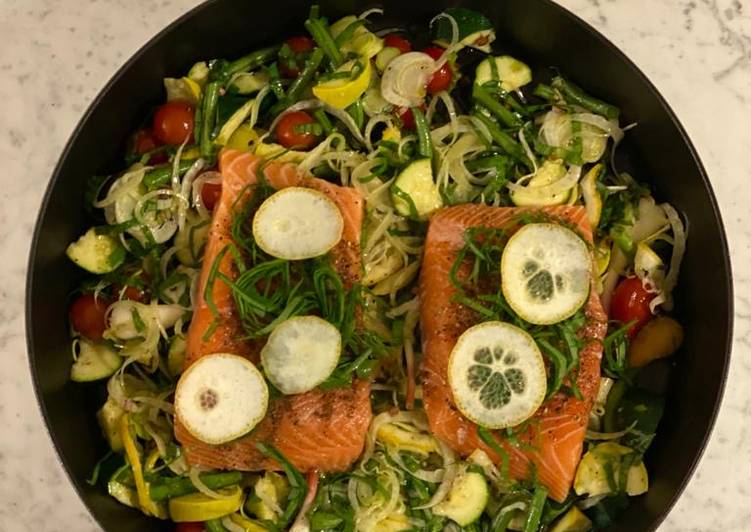Hey everyone, welcome to my recipe page, if you're looking for For Osechi, Too! Chikuzen-ni With Lots of Root Vegetables recipe, look no further! We provide you only the best For Osechi, Too! Chikuzen-ni With Lots of Root Vegetables recipe here. We also have wide variety of recipes to try.

Before you jump to For Osechi, Too! Chikuzen-ni With Lots of Root Vegetables recipe, you may want to read this short interesting healthy tips about {The Basics of Being Healthy. Becoming A Healthy Eater
Healthy self esteem originates in the environment found in thefamily, school, peer group, work place, and community. There are particular features of your environment which have to be current in order for self respect to be sabotaged and grow.
The major part of a healthy atmosphere for self respect is the fact that it needs to be nurturing. It should offer incomparable warmth, love, and caring. It ought to extend the understanding that other people are known as worthy to be nurtured, reinforced, rewarded, and bonded to.
Healthy environment for self esteem conveys messages of warmth, loving, and affectionate by bodily touch, meeting the survival needs of food, clothing and shelter, and offering a feeling of equilibrium and order in life.
A healthy atmosphere for self esteem should provide acceptance. It will recognize the other people see each other as worthy individuals that have a special set of personality characteristics, skills, abilities, and competencies which makes them special. Acceptance enables people to create relationships with other people, yet maintain healthy boundaries of individuality inside themselves.
At the healthy atmosphere for self esteem should be good communication, everyone ought to be heard and reacted to in a healthy way to ensure healthy problem solving can be possible. Appropriate giving and receiving of feedback will be both encouraged and rewarded. Communication at a"feelings" level is a mode of operation for these people, allowing them to be in touch with their emotions in a productive way.
That recognition and approval shouldn’t be based on the condition they must first conform to a prescribed standard of behavior or behavior. This can be unhealthy. Unconditional recognition and acceptance contributed in the form of service makes it possible for individuals to reach their ultimate potential.
The healthy environment for self regard should be clearly identified and enforced limits known to people without the hidden tricks or exploitation. Limits enable people to recognize their responsibilities and also to chart their path of behaviour in a rational way.
Respect and latitude for individual action within the specified limits of their healthy environment for self regard should be present too. This encourages people to use their imagination, creativity, and creativity to be productive within the established structure. Limits that suppress individuality may cause a narrow focus, together with people getting stunted and handicapped in the use of the own skills, skills, and resources.
Finally, healthy atmosphere for self esteem ought to be bonding, which is the physical/emotional phenomenon between individuals and the others in their environment. This is essential for the development of healthy self esteem. Bonding is forming a mutual emotional attachment between a person and a"significant other" (parent, child, friend, lover, etc.). This entails the substantial other giving unconditional love and support in addition to developing an emotional connection between each other.
We hope you got benefit from reading it, now let’s go back to for osechi, too! chikuzen-ni with lots of root vegetables recipe. You can have for osechi, too! chikuzen-ni with lots of root vegetables using 18 ingredients and 18 steps. Here is how you cook it.
The ingredients needed to cook For Osechi, Too! Chikuzen-ni With Lots of Root Vegetables:
- Prepare 1 Chicken thigh
- You need 1 tsp ☆Sake
- Take 1 tsp ☆Soy sauce
- Use 1 tsp ☆Mirin
- Provide 8 Satoimo (taro root)
- You need 1 Lotus root
- You need 1/2 Burdock root
- Provide 1 Carrot
- Use 6 Shiitake mushrooms
- Use 1 block Konnyaku
- Get 1 Snow peas
- Use 1 Vegetable oil
- You need 2 1/2 cup ★Dashi stock
- Provide 2 tbsp ★Sake
- You need 2 tbsp ★Sugar
- Use 2 tbsp ◆Soy sauce
- Take 2 tbsp ◆Mirin
- Prepare 1 pinch ◆Salt
Instructions to make For Osechi, Too! Chikuzen-ni With Lots of Root Vegetables:
- Cut the chicken into pieces that are a big bigger than bite sized. Combine with the ☆ ingredients.
- Cut the satoimi into hexagonal shapes, and blanch quickly. Wash them off to remove the surface sliminess and drain in a colander.
- Slice the lotus root 7 to 8 mm thick. Cut around the edges to turn the slices into flower-shaped lotus root slices. Soak the lotus root slices in vinegar water. (See Step 13.)
- Burdock root: Scrape the skin off with the back of a knife. Cut on an angle into thin slices, and soak in water. When the water turns brown, change to fresh water.
- Cut the carrot into 7-8 mm thick slices, and cut them out into flower shapes with a food cutter. Use a knife to turn them into nejiri-ume (twisted ume plum flowers). (See Step 16.)
- Shiitake mushrooms: Quickly rinse off any dirt, take off the stems, and cut in half if they are big. (Dried shiitake mushrooms are delicious, too.)
- Konnyaku: Slice 7 to 8 mm thick, make a slit down the middle, push the ends into the slit so they twist to form a knot konnyaku (see photo). Blanch in boiling water. (This prevents the konnyaku from un-twisting.)
- Put some oil in a pot and stir fry the chicken quickly. When it browns, remove.
- Add some oil to the same pot and quickly stir fry the ingredients from Steps 2 to 7. Add the ★ ingredients, put on a small lid that sits on top of the pot contents (drop lid or otoshibuta) and simmer over medium heat until the ingredients are tender.
- While the pot is simmering, prepare the decorative snow peas. Take the strings off, and blanch quickly in salted water (the salt is not included in the ingredient list). Refresh in cold water to fix the color. Cut as shown in the photo (or in any way you prefer).
- When the vegetables from Step 9 have cooked through, add the ◆ flavoring ingredients and chicken, and simmer until almost no liquid is left in the pan. (Cover partially with a lid and shake the pan around occasionally to distribute the flavors.)
- Transfer to a serving plate, and decorate with the snow peas. Serve.
- How to cut the flower-shaped lotus root
- Make cuts from the skin side in between all the holes of the lotus root.
- Cut around each hole while peeling. When all the edges above the holes have been cut on one side, flip over and cut off the remaining peel to finish.
- How to cut nejiri-ume (twisted ume flowers).
- Cut out the carrot using a flower shaped food cutter. Make slanted cuts in the carrot in between the flower petals five times.
- Carve the surface of the petals diagonally. Repeat for all 5 cuts and the flower is done.
If you find this For Osechi, Too! Chikuzen-ni With Lots of Root Vegetables recipe helpful please share it to your close friends or family, thank you and good luck.


